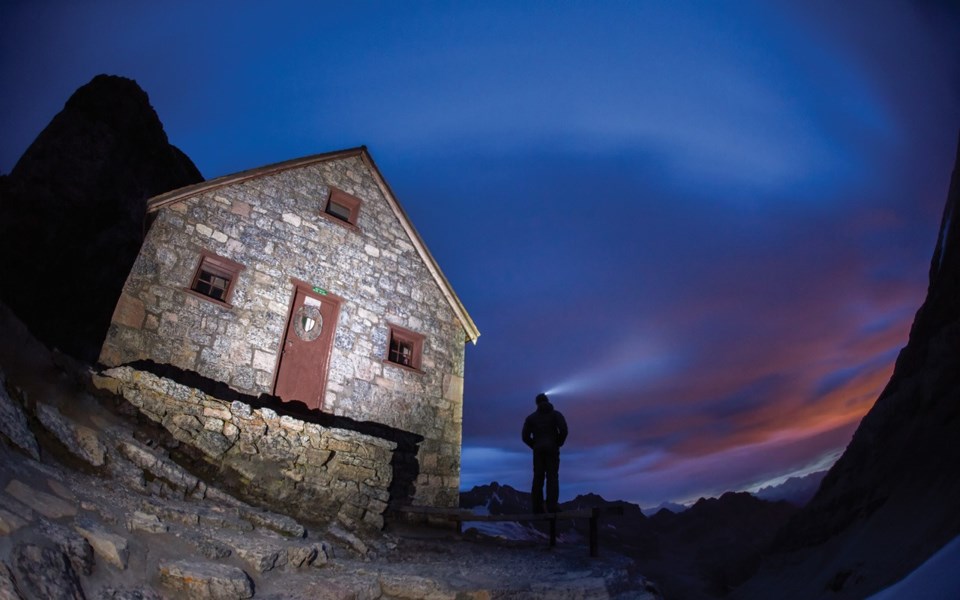The power of social media to popularize backcountry locations is well known at this point, with many pointing to Joffre Lakes Provincial Park and the many people who have learned of it via Instagram as a prime example.
Like some picturesque parks, certain backcountry huts are now grappling with an influx of new visitors—and a host of attendant issues they can cause.
The popularity of huts within the Alpine Club of Canada's (ACC) extensive hut system is now directly related to how often they are "exposed to social media," said Peter Hoang, communications specialist with the ACC.
According to Hoang, the prime example of this phenomenon is the Abbot Pass Hut, a picturesque stone hut that sits high up in the Rocky Mountains, in Banff National Park.
Built in 1922, the Abbot hut has traditionally been a refuge for hardcore climbers looking to ascend surrounding mountains. And while it still caters to that crowd, it's now seen as a prime destination for hikers who consider it an end-destination.
"We have two generations of people going there, and they are both on separate pages," said Hoang, speaking about the "tension" this has engendered. "Now, we just don't get climbers up there; we get people who use it as an end-destination and not a base camp."
This, explained Hoang, has led to problems, as many of the newer visitors don't fully appreciate the proper etiquette one is expected to follow while visiting the huts.
Hoang acknowledged that, in part, the ACC might bear some responsibility for that, having not adequately explained hut etiquette. "Maybe (it) hasn't been put across (adequately)," said Hoang. "It's not obvious."
To help address the problem, the ACC recently launched an ambassador program, which will see designated ACC members assigned the task of teaching etiquette to new visitors.
"We have people going up to these huts to tell people, more or less, what the etiquette is," explained Hoang. "They're more or less custodians for the hut—(and) for people."
This program, he added, will take the pressure off experienced ACC members who may otherwise feel responsible for intervening.
In a separate initiative that recently appeared on the ACC's blog, Aspects, the organization recently released a non-comprehensive list of written—and unwritten rules—of staying in alpine huts.
The project came at the suggestion of ACC members, and drew on over 200 written pieces of correspondence, said Hoang, who tallied the dominant themes and then released a list of five rules of hut etiquette. The list includes the need to replenish water, share the work, and respect quiet times.
"Not everybody is there for the same reasons ... so it's better not to party," said Hoang, adding that climbers might rise at 2 a.m. to begin their day.
The list also reminds people not to leave any food in the huts—a problem that Hoang acknowledged predates the arrival of the Instagram crowd. "It's usually seen as a favour, for people that come in the future," said Hoang, of the food issue. "But it just sits there and nobody eats it."
Yet out of all the themes mentioned in the letters, the most popular was heartening, said Hoang. It called on ACC members to "show other users the way" and "be a mentor and withhold judgment" of more inexperienced users.
That's a good thing, as new users develop an appreciation for the environment and hut system and end up helping to protect it, said Hoang.
"I think empathy is the basic rope that ties everyone together at huts," he said. "I think comments like that are super helpful."
To read the ACC blog posts on hut etiquette, visit alpineclubofcanada.ca/blog/2019/1/28/your-voice-on-hut-etiquette-pt1.




